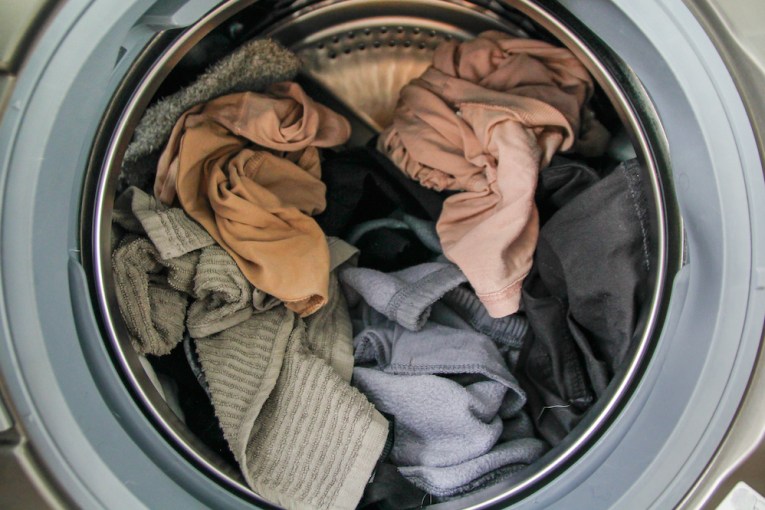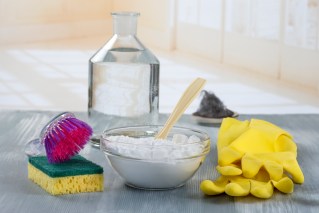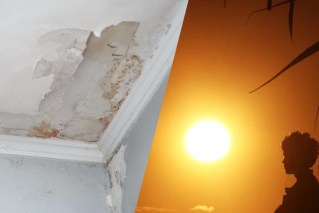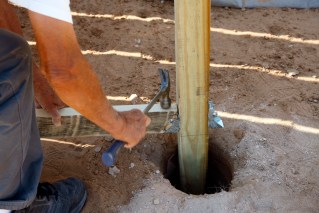DIY plumbing tips on tap for when the pipes are calling

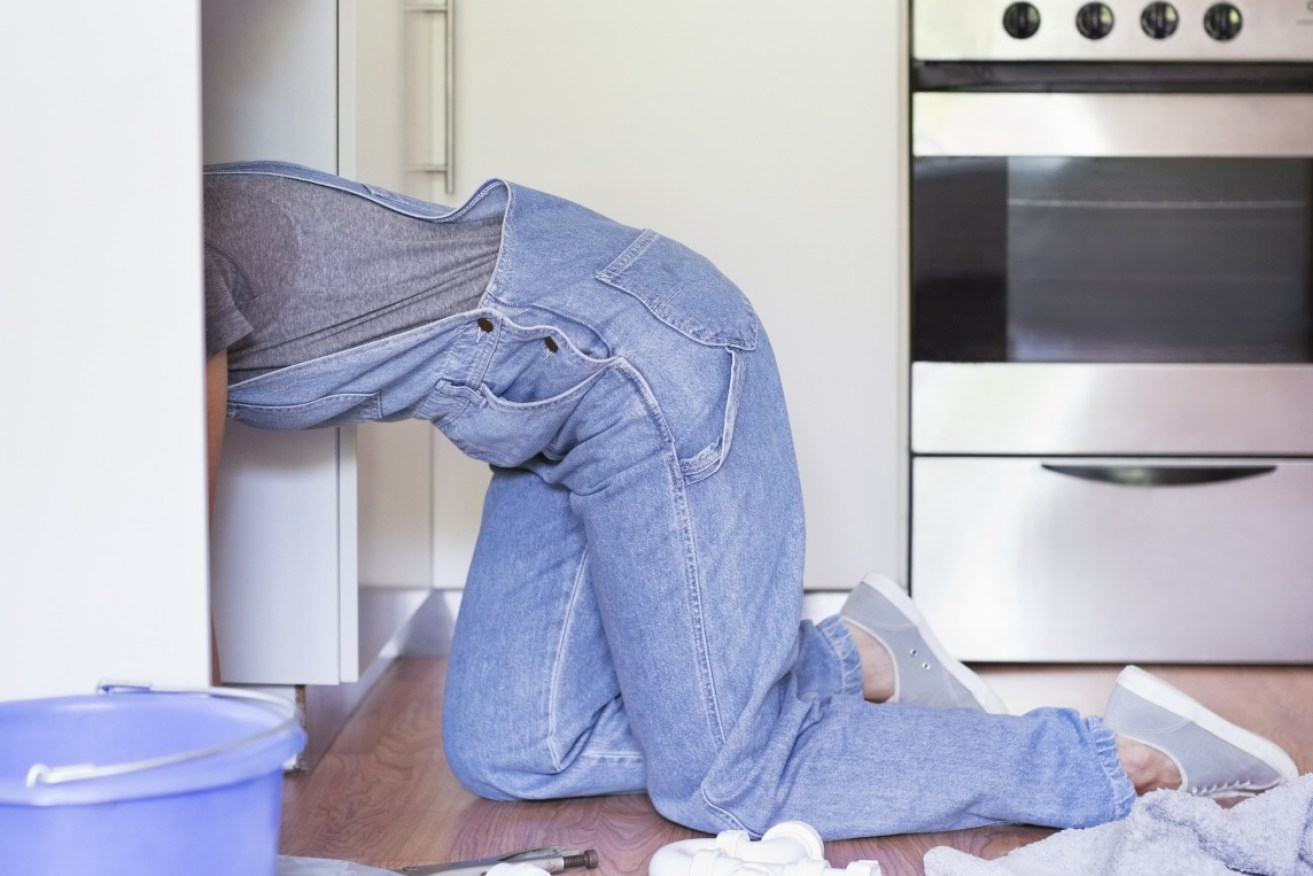
Solve your own plumbing problems – no plumber needed. Photo: Getty
Plumbing checks can help prevent bigger, more expensive problems down the track, so it’s worth taking a closer look at high water-usage areas regularly.
The trick is to plan these checks as part of your household chores. They don’t take long and can save money (and sanity) down the track.
Regular general plumbing checks
Water pressure: Check for water pressure problems by opening a tap on high flow. If the pressure is weak, it could indicate anything from a blocked tap to a blocked pipe or leak. When the water is at high flow, turn the tap off fast. The ‘bang’ you hear is water hammer. If the sound is prolonged, for example a shuddering noise that lasts longer than a few seconds, it may indicate your water pressure is too high, risking burst pipes and plumbing joint failure.
If you suspect you have a water-pressure issue, bring in a professional plumber to investigate.
Sinks and drains: Use your senses to detect whether your sinks and drains need closer examination: visible cracks in basins or sinks, bad smells and unusual gurgling all indicate problems. Check areas that might escape regular attention, such as pipes and hoses under the sink. Any braided hoses that look worn need immediate attention to avoid bursts.
Noticeable cracks in fixtures: Address cracks as soon as possible before moisture compromises the fixtures, as damp leads to mould and may affect other parts of the bathroom. There are waterproof sealants available for small cracks; larger fissures though may mean you need to replace the whole fixture.
Bad smells and gurgling in drains, or under the sink: Smells are often from stagnation, which can indicate a blockage or a faulty seal. If just one drain empties slowly or gurgles, it’s a local blockage due to foreign masses such as clumps of hair or fats from food, which you can attempt to clear.
Tip: If it’s stubborn or affects more than one drain, it requires a professional plumber because the issue is located in your main pipes.
Leaky taps: Fix these as early as possible to prevent water waste and other problems in the future. Not replacing a worn washer could exacerbate wear and tear on other, more expensive, tap parts for example. So make sure you get to that leaky tap quick smart.
In the bathroom
Toilet: A flushing toilet is one everyday fixture most people take for granted… until it malfunctions. The easiest way to check is to flush the toilet and observe what happens.
Water slow to drain from the toilet bowl or water level is too high or low: These symptoms generally indicate a local blockage. If you are confident using a flange plunger, you can try to clear the blockage yourself. However, an incorrect technique can push the blockage further down the pipeline, so if you don’t have the skills, calling a professional plumber will be the best way to go.
If your toilet is slow to empty and you’re experiencing issues with slow emptying sinks as well, you need to call in the professionals to address the blockage – don’t delay as the consequences can be very unpleasant.
Toilet cistern leaks: Not all leaks are as obvious, as audible, or as visible as water running from the cistern into the bowl. Slower leaks are harder to spot but may still affect your flush. To check, make sure the water in the bowl is clear, then add six to eight drops of food colouring into the cistern. Wait at least half an hour without flushing and then check the bowl; if the water is stained, then there’s a leak.
Cistern leaks can emanate from a number of places – one or both of the valves inside the cistern are often the culprit. If you can DIY, check that the valves are properly aligned or try swapping out the washer. If the valves are leaking, they need to be replaced. Leaking is a sign of ageing and it’s better value to invest in a long-term solution than to keep tinkering with each part as it fails.
Tiles and surfaces: Use touch as well as sight to determine if surfaces need remediation.
Worn or missing seals and/or grout: Check silicone seals and grout are in good condition as these often-overlooked areas bear the first signs of water damage. It is easy enough to re-seal or re-grout if required. Mould will start to grow in tatty silicon seals so cut them out and replace.
Spongy or ‘drummy’ surfaces: These are symptoms of compromised waterproofing. To confirm, press the surface. If it feels soft or spongy or sounds hollow when you tap it, there’s likely to be water damage. The best remedy is to have the surface pulled up and waterproofed by a professional before being re-tiled. If the surface is solid you may have a ventilation problem that has encouraged mould. Ensure your exhaust fan is clean and in working condition and consider letting in more air and light through windows and doors where possible.
In the kitchen
Take notice of slow-draining sinks or smelly areas in your kitchen, especially under the sink.

Photo by Superior Woodcraft, Inc.
Warped cabinetry: Misshapen cabinetry often indicates water damage, so check for leaks or water stagnating where it shouldn’t be. Once you’ve fixed the plumbing problem, you can repair minor damage or replace heavily damaged cabinetry.
Dishwasher checks: If you’ve had problems with your dishwasher unrelated to its electronic operations, it is likely to be due to plumbing issues. A dishwasher that stops mid-cycle, leaks or has water pooling at the base may indicate a blockage that needs to be cleared. But if you have a serious blockage, these methods may not work.
Perform regular maintenance too: Check for splits in hoses (replace if you find cracks) and if there are any kinks; straighten them out as they put pressure on one spot and can cause the hose to break. Replace them every year; the cost is negligible compared with the flood that can result from a burst hose. And don’t forget to clean the filter.
Mouldy surfaces: As with the bathroom, mould in the kitchen screams compromised waterproofing. Check that grout and sealant are intact. If worn, clean the area of mould first, ensure it is dry and then re-grout or re-seal.
In the laundry
Laundry floods, caused by a burst hose or valve, are a common plumbing-related insurance claim, so it’s a good idea to practise prevention by turning off the taps to the appliance when not in use to prevent the build-up of water pressure, which can lead to flooding. You can also install flood-stop valves in case your washing machine overflows.
As with the bathroom, make an effort to check under the sink and in corners that don’t receive regular attention and address excessively wet areas, bad odours, drain blockages and leaks the same way. The laundry also needs to be well ventilated to prevent mould; don’t forget to leave your washing machine open until the interior is dry too.
Dampness or puddles: These are often symptoms of a small leak, but because the volume of water used in a load of washing is so great, even a small leak can become a flooded laundry in a short period.
Washing machine maintenance: As with dishwasher maintenance, take some time to examine washing machine hoses to the machine and from the machine to the drain. If there are any splits, replace the hose and if there are any kinks, straighten them out. Ensure there is enough room between the wall and the appliance for the hoses to hang freely.
Rust spots: Rust spots in or around your laundry, including the sink, could indicate that these surfaces are in continuous contact with moisture, so check for the source. You can sand back the rusty spots and apply a waterproof coating to prevent further spread. If the fixture is badly rusted it will need replacing.
Acting on small plumbing issues as soon as you notice them is good maintenance practice. Performing checks every few months in less noticeable areas will also help you proactively manage issues to prevent larger problems. Remember, the longer you leave it, the higher the bill.



